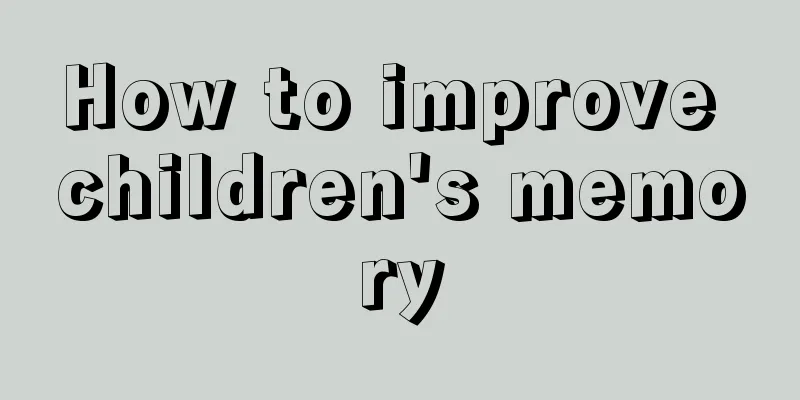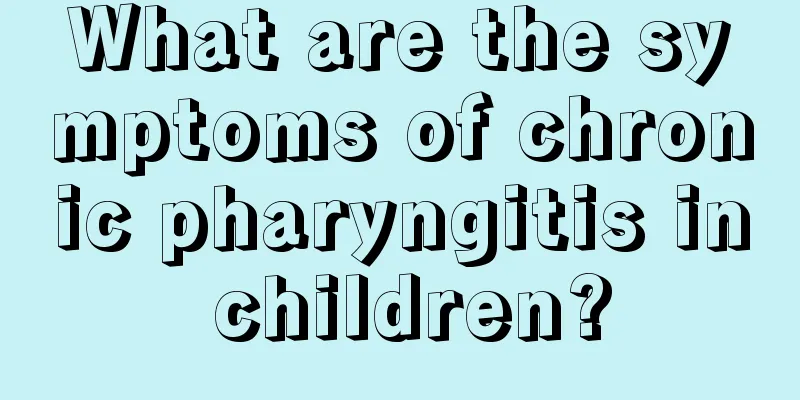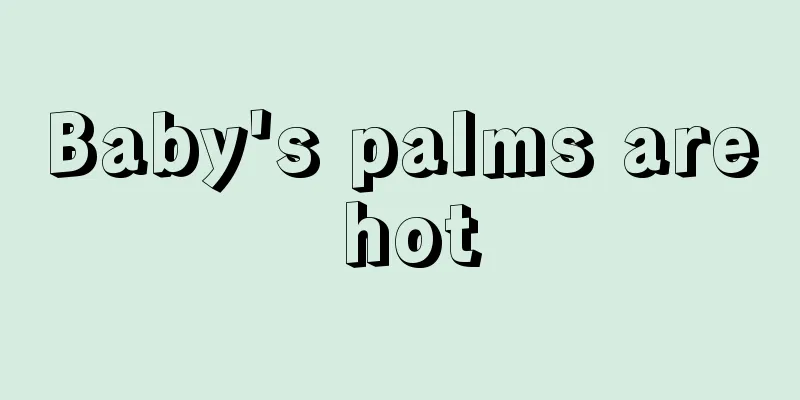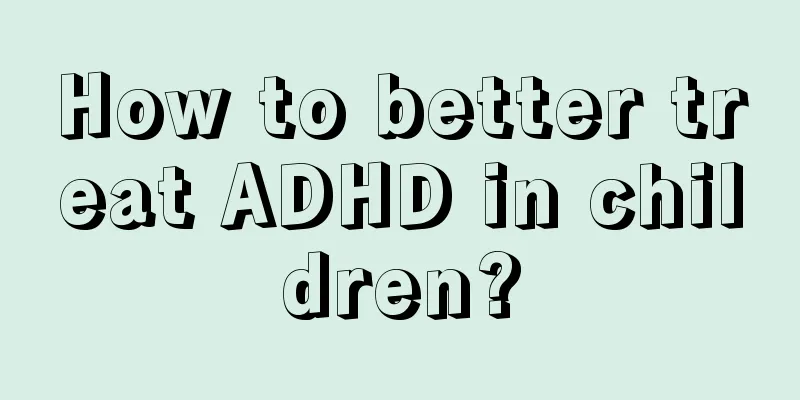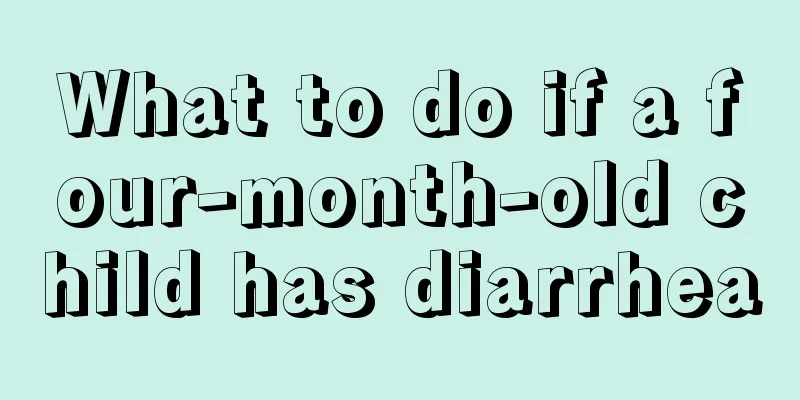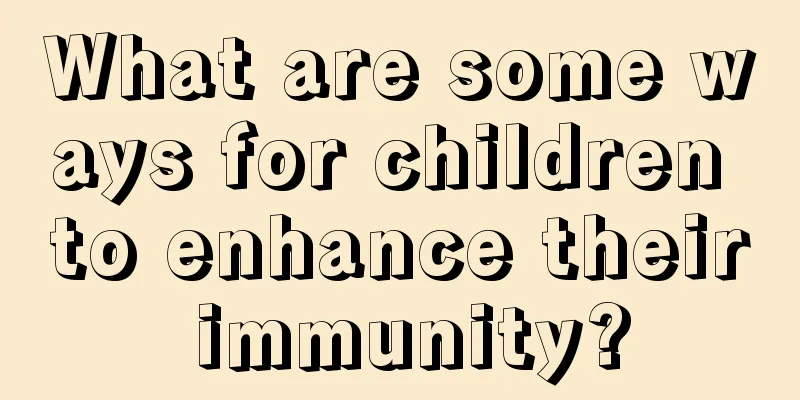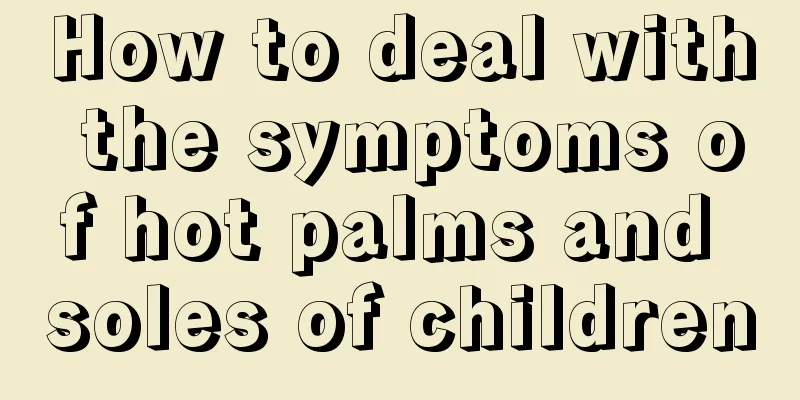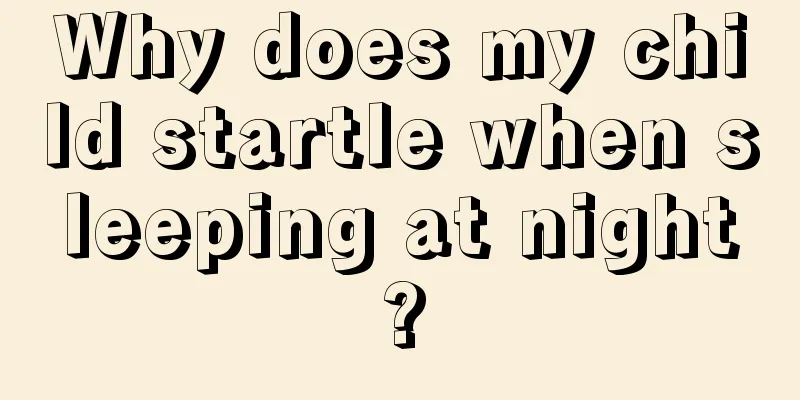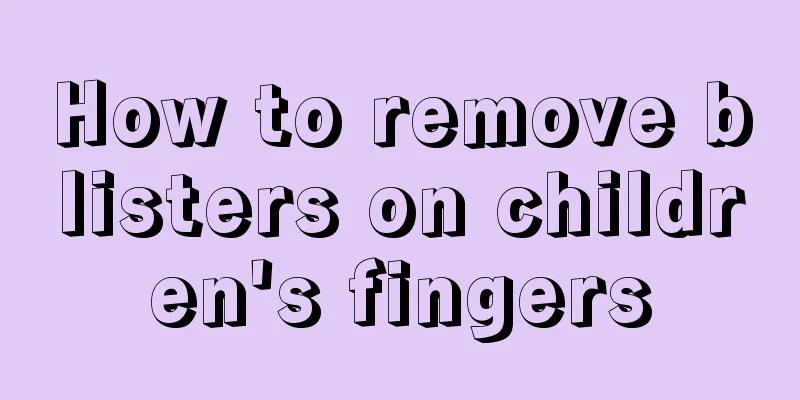Precautions for treating high fever convulsions in children
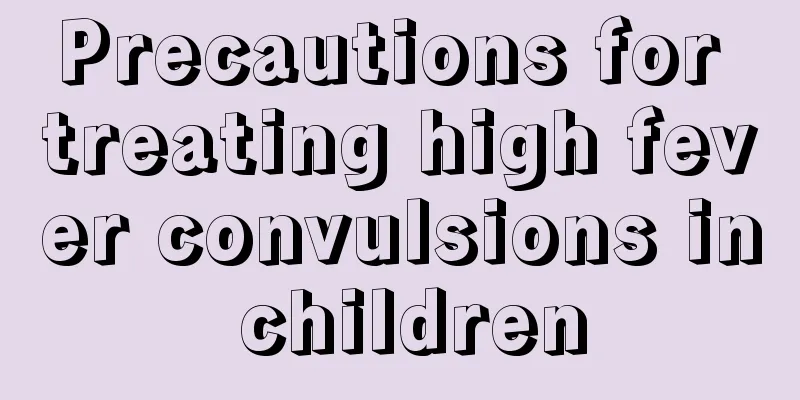
|
If suddenly one day, your child's face twitches, his limbs move around, and he has difficulty breathing, you don't know what to do. In fact, this may be a high fever convulsion in the child. A high fever convulsion in a child is an emergency symptom and must be treated immediately. In fact, young mothers don’t need to be afraid. This is not a serious illness. As long as you master the precautions for treating children’s high fever convulsions, the problem can be easily solved. When a convulsion occurs, the child should take a semi-recumbent position, loosen the collar, press the philtrum with the fingers, and gently support the limbs to avoid joint injuries and falls. You can tilt your head to one side to prevent saliva or vomit from being inhaled into the trachea and causing suffocation. After the convulsion stops, if there is a lot of laryngeal secretion, use a suction device to suck out the sputum and give oxygen immediately for a short time. If breathing difficulties or arrest occur after a convulsion, artificial respiration should be performed. 【Symptomatic treatment】 ① Anticonvulsant: The first choice of anticonvulsant drugs is the rapidly acting diazepam. Diazepam is highly lipid-soluble and can easily enter the brain tissue. It takes effect 1 to 3 minutes after injection, but the effect lasts for a short time (15 to 20 minutes). If necessary, it can be repeated after 15 to 20 minutes. Or choose 10% chloral hydrate enema. At the same time or subsequently as diazepam, phenobarbital, which has a longer duration of action, may also be used to maintain the anticonvulsant effect. Children with typical febrile seizures generally only need treatment directed at the primary disease. Those with frequent seizures can also receive short-term preventive treatment. Only a few cases of complex febrile seizures may require long-term preventive treatment with sodium valproate or phenobarbital. However, there is no consensus on the prevention of febrile seizures. ② Reduce fever: Febrile convulsions are the most common cause of convulsions in children, so you should pay attention to ways to reduce the temperature quickly. ① Drug cooling: acetaminophen or ibuprofen can be taken orally. ② Physical cooling: Warm water baths, ice packs, etc. are effective cooling measures. Except for infants under 3 months old, they can be used alone. For children of other ages, they are only likely to be effective if used after drug cooling. ③Prevention and treatment of cerebral edema: Patients with recurrent seizures or those with seizures in a persistent state often have secondary cerebral edema and should be given 20% mannitol to reduce cerebral edema. 【Treatment of persistent seizures】 Continuous state of convulsion can easily cause irreversible brain damage and should be treated promptly. Principles: ① Select fast-acting and powerful anticonvulsant drugs to control seizures in a timely manner. Diazepam is the first choice, and midazolam or loading dose topiramate can also be used. If necessary, general anesthesia can be used under endotracheal intubation. Take drugs as early as possible, in sufficient doses, with rapid onset of action, long duration of action and few side effects. ② Maintain vital functions, prevent and treat cerebral edema, acidosis, respiratory and circulatory failure, keep the airway open, oxygen inhalation, and maintain a stable internal environment, especially paying attention to timely correction of hypoglycemia and acid-base imbalance. ③ Actively find the cause and control the primary disease, and avoid inducements. 【Cause treatment】 For children with convulsions, the importance of treating the cause should be emphasized. Infection is a common cause of pediatric convulsions. As long as bacterial infection cannot be ruled out, antibiotics should be used early. For those with central nervous system infections, antibiotics that can easily pass through the blood-brain barrier should be selected. Convulsions caused by metabolic reasons (such as hypoglycemia, hypocalcemia, cerebral beriberi, etc.) should be corrected in time to relieve the convulsions. In addition, for diseases such as tetanus and rabies, the former should neutralize the free tetanus toxin in the lesions and blood as soon as possible, and tetanus antitoxin TAT 10,000 to 20,000 U should be given, half by intramuscular injection and half by intravenous drip; the latter should be promptly applied with anti-rabies vaccine, which can be injected into the area around the wound and the bottom of the wound; in case of poisoning, the poison should be removed as soon as possible, such as inducing vomiting, catharsis or promoting the excretion of the poison in the body, so as to reduce the continued damage of the poison. I know that if your child has a high fever and convulsions, you will not be able to eat or sleep all day, and it will be heartbreaking to see your child in pain when he or she is sick. Therefore, we should learn more about the causes of diseases. As the saying goes, prevention is the main thing and treatment is auxiliary. When you take preventive measures, you will get sick less often. |
<<: How to know the baby's height and weight standards
>>: How to prevent baby from having fever and convulsions
Recommend
Myopia treatment for children
There are many people with myopia, especially man...
What is the normal body temperature for a one month old baby?
The temperature regulation function of a one-mont...
What are the symptoms of diarrhea and dehydration in children?
Everyone knows that the baby's physical devel...
What causes children's rough skin?
Children are our future, the intermediate force f...
Baby keeps farting and hasn't pooped for three days
We all know that a person normally defecates once...
How to add egg yolk to baby food
The yolk is the most nutritious part of the egg. ...
What is the reason for a child to have a fever and vomit?
In people's daily lives, some diseases will o...
Four-month-old baby's neck is not stable
The baby's neck is not stable at four months ...
What should I do if a seven-year-old child has a cough?
People of all ages usually have symptoms of cough...
The baby's poop is like tofu dregs
Many secretions or excretions from the body can r...
Right brain development training method for children
In terms of caring for young children, it must be...
What are the symptoms of hypothyroidism in children
Neonatal hypothyroidism mainly occurs before chil...
What should I do if my child has severe constipation?
Children's digestive systems are not yet full...
What should I do if my baby coughs and wheezes? Moms can do this!
If an adult is coughing and wheezing, there are m...
What to do if your child has toothache
Children like to eat candy and sweet food, so if ...
